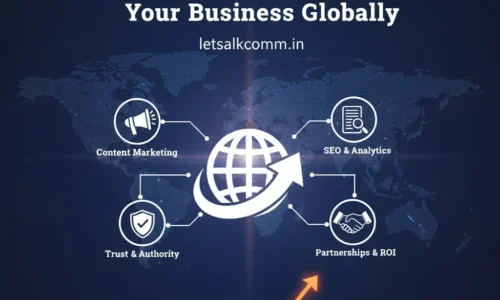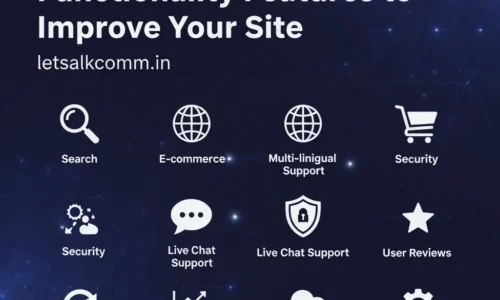
In an age where attention is short and competition is intense, creating viral content is more than just a marketing trend. It’s a powerful tool to amplify brand awareness, spark conversations, and draw meaningful engagement. For businesses in India, especially those exploring DTC models or operating on platforms like Shopify, a well-executed brand awareness campaign India can mean the difference between slow growth and explosive visibility.
But what does it take to go viral, and how can your content strategy work in favor of building lasting brand recognition?
Understand the Psychology Behind Viral Content
Before jumping into content types or channels, it’s important to understand why people share. Viral content often taps into emotion. It can be funny, surprising, relatable, inspiring, or even frustrating. What matters most is that it connects on a human level. When you tap into this psychology, you’re not just producing content, you’re triggering reactions.
In the context of a brand awareness campaign India, cultural sensitivity is vital. Humor or trends that resonate in Western markets may not always click with Indian audiences. Understanding regional languages, festivals, memes, and current events can make a significant difference. Content that mirrors a consumer’s own world tends to feel more authentic and, in turn, gets shared more often.
Align Viral Potential with Brand Identity
Going viral for the wrong reason can hurt more than help. That’s why every piece of potentially viral content should align with your core brand values. Start by defining what your brand stands for. Is it fun, informative, luxurious, or eco-conscious? Your content should reflect that identity even if it’s part of a larger brand awareness content push.
For D2C businesses, especially those building a strong DTC content strategy, authenticity is crucial. Users want to feel like they are part of something real. So, while jumping on trends may give you temporary visibility, aligning those trends with your message ensures longer-term gains. For example, if you’re a sustainable skincare brand, a viral reel showing how your product reduces waste or uses local ingredients can align naturally with both the cause and your audience.
Optimize for Platforms That Matter
Different platforms cater to different types of content and audiences. Instagram reels, YouTube Shorts, and even LinkedIn posts can all go viral in their own ways, but each requires specific formatting and tone.
For businesses running content marketing for Shopify brands, it’s essential to optimize content natively. Shopify stores often rely on visually appealing content—videos, reviews, influencer clips, or tutorials, that can be repurposed across Instagram and Facebook. If you’re aiming to drive traffic directly to your product pages, short product demos with a creative twist can do wonders.
Likewise, email newsletters, while less “viral” in the traditional sense, can still be part of a brand awareness content strategy. Share behind-the-scenes stories, user-generated posts, or exclusive sneak peeks that subscribers are likely to forward to others. A multi-platform approach increases the chances of viral traction.
Harness the Power of Trends and Timing
Timing is everything in content virality. Latching onto a trending topic, meme, or event while it’s hot can give your brand a significant boost. But doing it well requires more than just fast reflexes, it needs strategy.
For example, if you are planning a brand awareness campaign India around a major cricket event, festival, or national celebration, your content should be tailored accordingly. A quick, humorous ad during IPL season with a relevant cricket pun can help you gain attention rapidly, especially if it integrates your product naturally into the narrative.
However, avoid overdoing trends that do not align with your DTC content strategy. Always prioritize brand voice over virality for the sake of consistency. The best viral content is that which serves both short-term reach and long-term brand recall.
Track What Works and Repeat with Variation
One viral hit can boost your traffic, but sustainable success comes from learning and iteration. Analyzing what worked, engagement rates, shares, comments, watch time, can help you identify patterns. Was it the thumbnail, caption, sound, or timing that clicked? These insights are gold.
When it comes to content marketing for Shopify brands, analytics should drive future decisions. Shopify dashboards, Google Analytics, and social media insights together paint a picture of user behavior. If a particular product tutorial or review went viral, replicate that format with other products. If a quirky customer reaction post received traction, build more around user-generated content.
Also, consider testing different versions of the same idea. One piece may not go viral, but slight changes in angle, headline, or format could make the difference. This type of variation is an integral part of every successful DTC content strategy that aims to balance creativity with data-driven refinement.
Leverage Collaborations and User-Generated Content
Another proven way to scale virality is through partnerships. Influencers, meme pages, community groups, and even existing customers can help you tap into new circles. For a brand awareness campaign India, working with regional micro-influencers can bring high engagement in specific language or cultural segments that mass media may overlook.
User-generated content is also incredibly powerful. Encourage your customers to share their experience using a specific hashtag or challenge. This kind of social proof carries more trust than brand-produced content and often spreads faster. It also feeds directly into your brand awareness content reservoir with minimal investment.
If you’re operating in the Shopify ecosystem, UGC fits beautifully into content marketing for Shopify brands. Showcase real users in product reviews, create testimonial videos, or stitch together reactions. Not only does this help drive conversions, but it also builds a loyal and vocal customer base.
Conclusion
Viral content is not about luck. It’s about understanding your audience deeply, aligning content with your brand identity, and using the right platforms at the right time. For Indian businesses looking to grow online, a smart brand awareness campaign India should focus on emotional storytelling, cultural relevance, and consistent experimentation. As the digital landscape continues to evolve, so should your DTC content strategy. Viral moments come and go, but a loyal community that recognizes your voice and values will always stay. Through careful planning and human-centered storytelling, you can turn a piece of viral content into a lasting impression and that’s where true brand growth begins. The future of content marketing for Shopify brands is not just about selling more. It’s about being seen, heard, and remembered.





